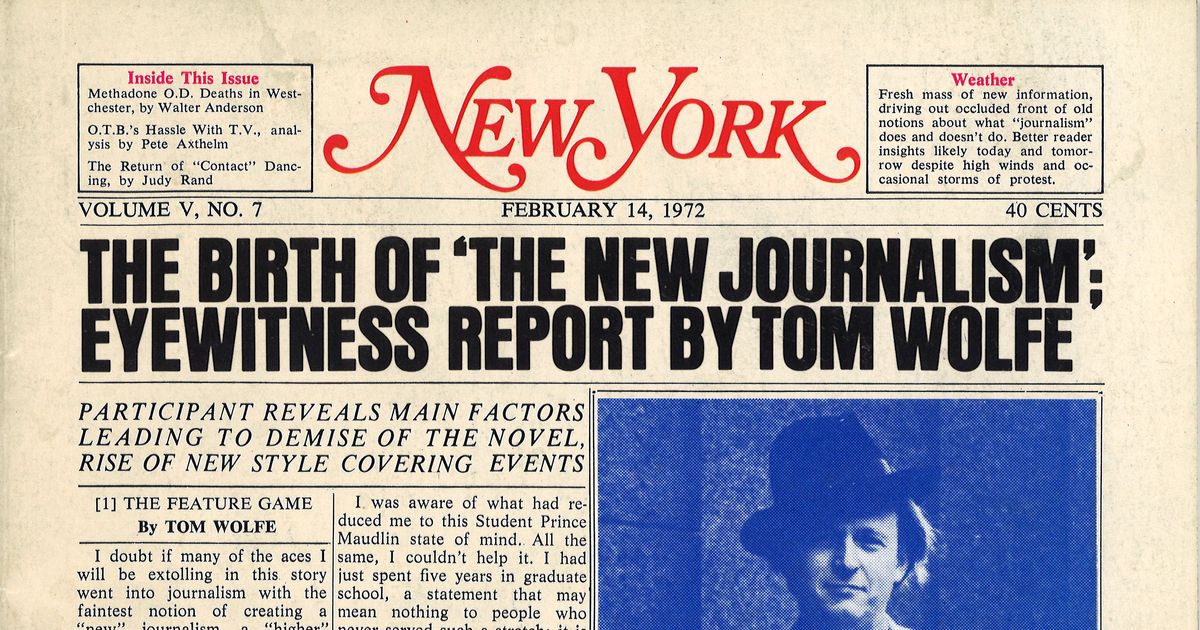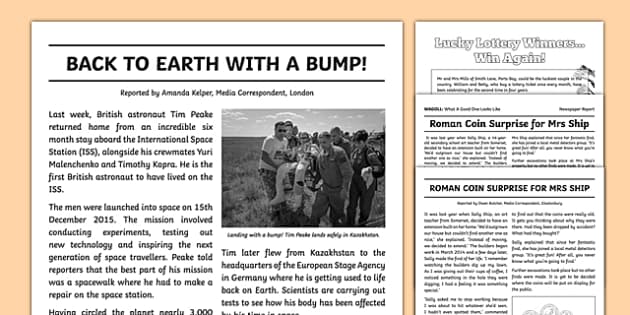Everything about News Articles
Everything about News Articles
Blog Article
News Articles Things To Know Before You Get This
Table of ContentsThe News Articles IdeasWhat Does News Articles Mean?An Unbiased View of News ArticlesSome Ideas on News Articles You Should KnowThe Of News Articles
Excellent understanding of different subjects provides pupils a competitive side over their peers. Even though electronic and social networks are readily available, we ought to not fail to remember just how vital it is to check out the newspapers. Moms and dads have to attempt and inculcate the routine of reading a paper as a day-to-day regimen to continue the heritage of the revered print medium.News stories additionally have at least one of the following important qualities relative to the desired audience: distance, prominence, timeliness, human rate of interest, oddity, or consequence.
Within these restrictions, newspaper article additionally intend to be comprehensive. However, various other elements are involved, some stylistic and some originated from the media form. Amongst the bigger and much more respected papers, justness and equilibrium is a significant factor in offering info. Commentary is generally constrained to a different section, though each paper may have a various total angle.
Newspapers with a global audience, for instance, tend to make use of a more formal design of composing. News Articles.; typical style guides consist of the and the United States Information Style Book.
The smart Trick of News Articles That Nobody is Talking About
Generally, reporters will certainly not utilize a lengthy word when a short one will certainly do. They use subject-verb-object building and construction and vivid, energetic prose (see Grammar). They provide anecdotes, examples and metaphors, and they hardly ever rely on generalizations or abstract ideas. News authors attempt to stay clear of utilizing the exact same word greater than when in a paragraph (in some cases called an "echo" or "word mirror").
Headlines sometimes omit the subject (e.g., "Jumps From Watercraft, Catches in Wheel") or verb (e.g., "Feline lady lucky"). A subhead (likewise subhed, sub-headline, subheading, subtitle, deck or dek) can be either a subservient title under the primary heading, or the heading of a subsection of the short article. It is a heading that precedes the major text, or a team of paragraphs of the main text.

Extra signboards of any of these types may appear later on in the post (specifically on subsequent pages) to entice further analysis. Such billboards are additionally used as reminders to the post in other areas of the magazine or website, or as advertisements for the item in various other publication or sites. Regular structure with title, lead paragraph (recap her comment is here in vibrant), other paragraphs (information) and contact info.

Example of a hard-lead paragraph NASA is recommending another area task. The company's budget plan request, introduced today, consisted of a plan to send out an additional objective to the Moon. This moment the firm wants to develop a long-lasting facility as a jumping-off point for other room journeys. The budget requests approximately $10 billion for the project.
An "off-lead" is the 2nd most vital front page information of the day. To "hide the lead" is to begin the article with background info or details of secondary importance to the viewers, forcing them to read more deeply right into an article than they should have to in order to discover the necessary factors.
The Definitive Guide to News Articles
Common use is that a person or 2 sentences each create their own paragraph. Journalists generally define the organization or framework of a news story as an inverted pyramid. The important and most intriguing aspects of a tale are placed at the start, with supporting information following in order of lessening importance.
It allows individuals his response to check out a subject to just the depth that their inquisitiveness takes them, and without the imposition of details or nuances that they could think about pointless, however still making that info available to extra interested readers. The upside down pyramid structure likewise enables posts to be cut to any kind of approximate size throughout layout, to fit in the space offered.
Some authors begin their stories with the "1-2-3 lead", yet there are numerous type of lead available. This format usually begins with a "Five Ws" opening paragraph (as described above), adhered to by an indirect quote that serves to sustain a significant aspect of the first paragraph, and afterwards a direct quote to sustain the indirect quote. [] A kicker can describe numerous points: The last tale current broadcast; a "happy" tale to finish the show.
Longer write-ups, such as publication cover posts and the items that lead the inside areas of a newspaper, are known as. Attribute tales vary from straight information in numerous methods.
Not known Facts About News Articles
The journalist commonly information communications with interview topics, making the item more individual. A feature's first paragraphs the original source usually connect a fascinating minute or occasion, as in an "anecdotal lead". From the particulars of an individual or episode, its sight quickly broadens to generalities about the tale's topic. The area that signifies what a feature is around is called the or billboard.

The Editor's Tool kit: A Referral Overview for Beginners and Professionals (2001) Allan M. Siegal and William G. Connolly. The New York Times Guidebook of Design and Use: The Official Style Guide Used by the Writers and Editors of the Globe's The majority of Reliable Paper (2002) M. L. Stein, Susan Paterno, and R.
Report this page